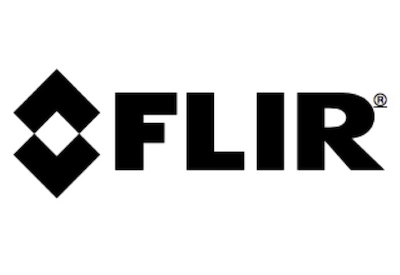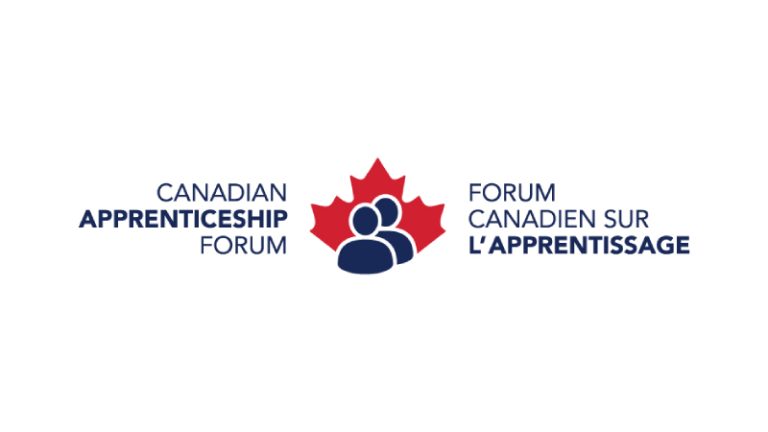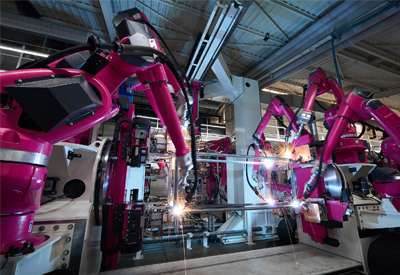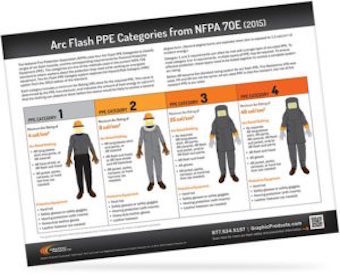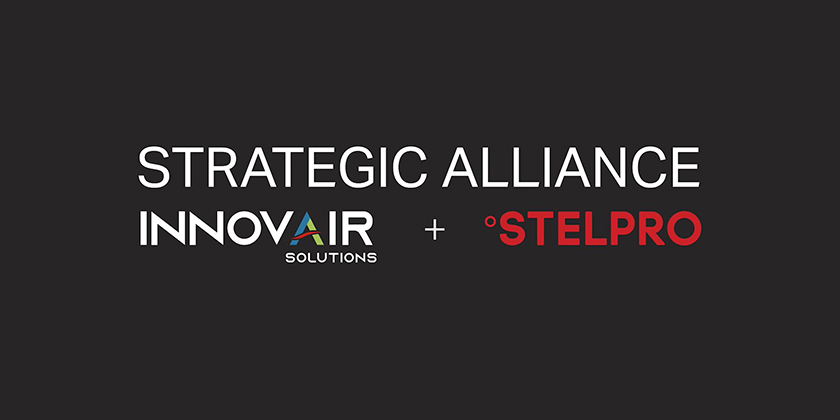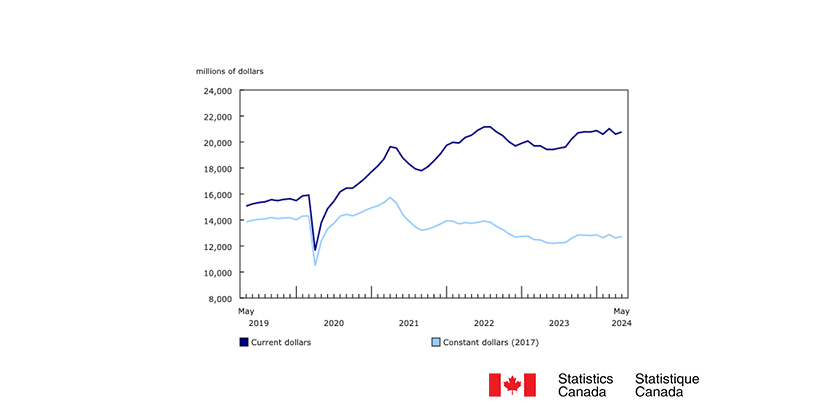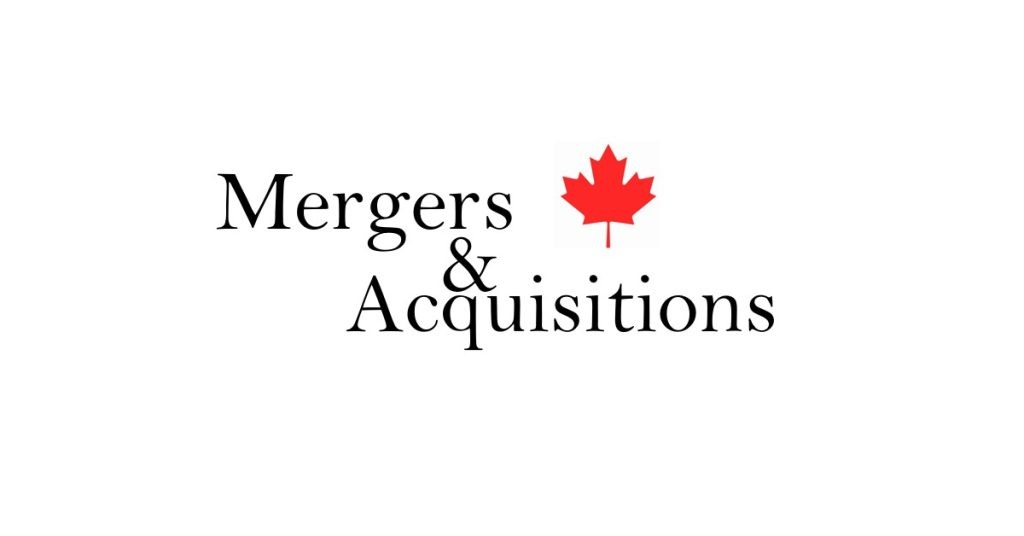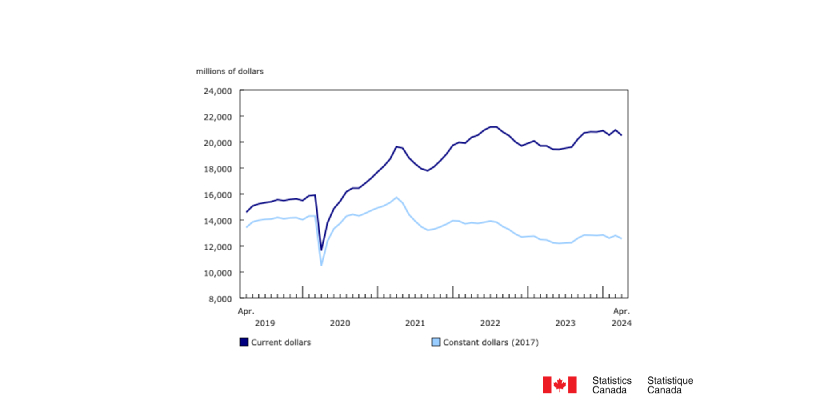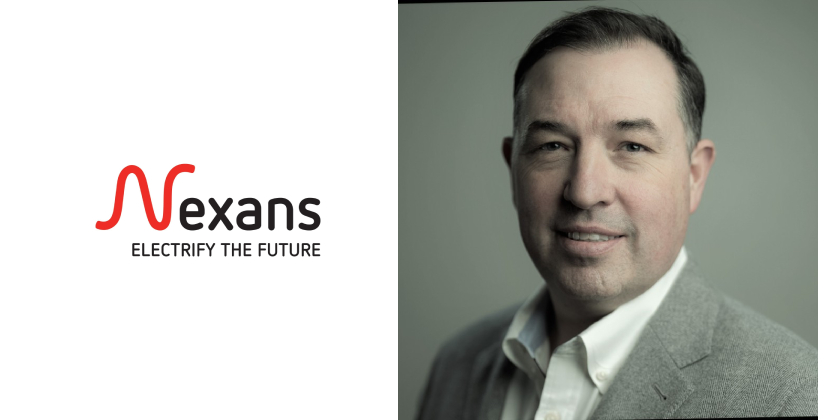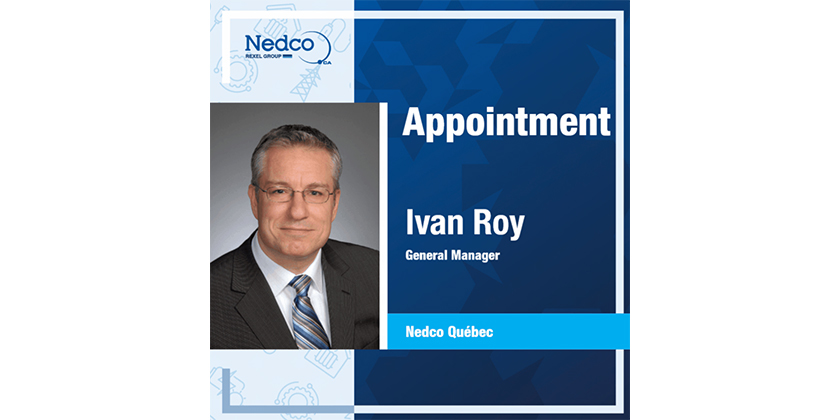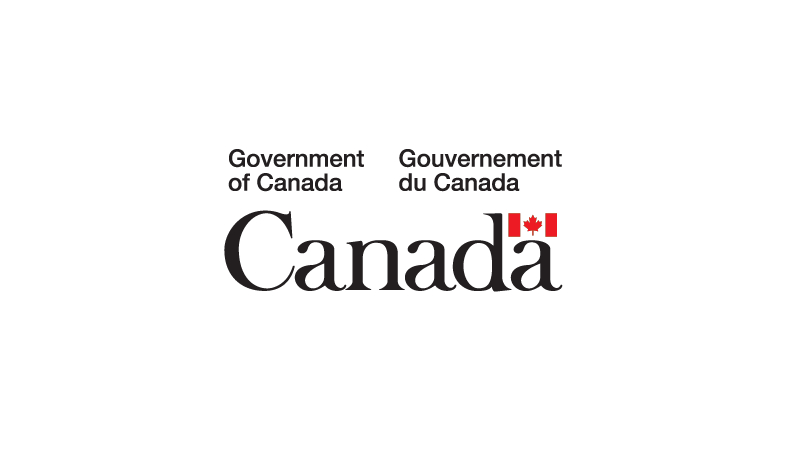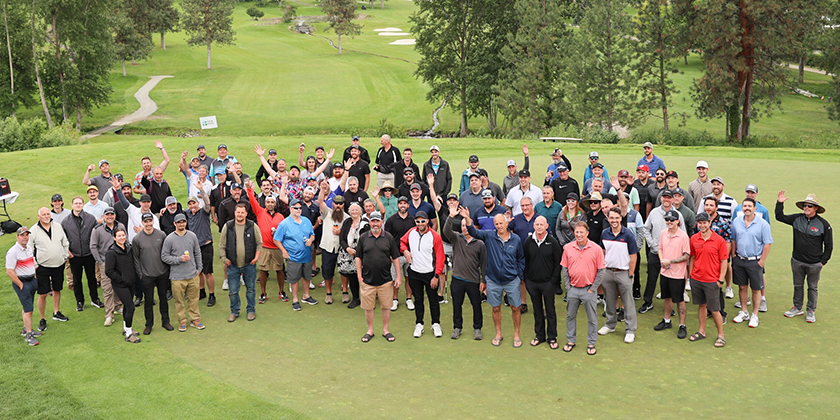Major Ontario Electrical Code Changes with EFC and ESA’s Ray Yousef
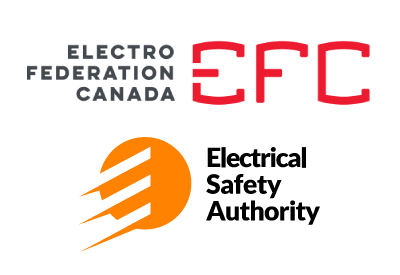
April 12, 2022
By Blake Marchand
On March 30th, the EFC (Electro-Federation Canada) in collaboration with Ontario’s ESA (Electrical Safety Authority) presented on the top changes to the Ontario Electrical Code with the upcoming adoption of the 2021 Canadian Electrical Code. The presentation was hosted by EFC Ontario Region Chair John Hadley and presented by Ray Yousef of ESA.
In total there were 330 closed subjects, 217 approved revisions and 9 approved interpretations. Yousef’s top three changes included a new section for farm buildings housing livestock, Rules 22-800s; a new section for energy storage systems, Rules 64-900s; and an amendment to GFCI requirement for outdoor receptacles, Rule 26-704.
The change for Farm Buildings Housing Livestock is a new subjection of section 22. As mentioned, it is listed under 22-800.
All buildings housing livestock are determined to be Category 1 (wet location) and 2 (corrosive environment) unless deviation is granted. All connections need to be corrosion resistant, Type 4X plug set. And all electrical equipment must be suitable for the location, except specialty type equipment and ventilation fans.
The recommendation came from a specific working group that included regulators, manufacturers, insurance companies, farmers, farming associations, “it was a really well-rounded working group that came up with that proposal,” Yousef noted. ESA’s Nancy Hannah served the chair of the working group.
“The main motivation to start this working group is a letter we received from Ontario Office of the Fire Marshal,” the letter consisted of incidents collected between the years of 2009 to 2017 and it shows more than 2100 incidents in barns, “Most of them were, I would say, 35% of them were barns housing animals.”
“The main change we will see in that subsection is that now all buildings housing livestock are determined to be Category 1, which is wet location, and Category 2, which is corrosive environment. Electrical need to be installed there based on that categorization, and all connection to be corrosion resistant Type 4X.”
Yousef added that, “This is major, and we believe it will enhance safety in these buildings and we’ll hopefully see a reduced number of incidents in these buildings based on the better, more robust, and more suitable electrical equipment.
The 2021 edition of the electrical code requires all 15A and 20A receptacles, within 2.5 meters of finished grade, to be protected by Class A type GCFI, listed under Rule 26-704. Additionally, vehicle heater receptacles are no longer excluded from GFCI requirements. Previously this rule only applied to residential areas, now it applies to all areas.
This change was an important one for Yousef, “this is a great improvement to safety, because it doesn’t matter where this outlet is installed outdoors, a residence or a commercial building or a parking lot, anywhere, it’s the same hazard, it’s the same exposure for anyone plugging in equipment, it doesn’t matter what the occupancy is, so in my opinion this is overdue and very good change for safety.”
Energy Storage Systems, Rules 64-900 is a new section added to the 2021 code outlining requirements for disconnecting means, including disconnecting means for self-contained ESS (Energy Storage Systems). It also includes requirements for where ESSs can be located and separated from structure and equipment.
“We have seen this coming over and over again. In Ontario and all over Canada see involvement of energy storage systems every single day – with new products, with new technologies.”
“In Ontario 2018 code, we had an Ontario amendment of Rule 64-900s, that gave some direction on installation of energy storage systems. The technical subcommittee for Section 64 in CE code took that as a seed and formed a very intensive working group,” noted Yousef, to expand on the direction provided in 2018 Ontario amendment.
“The new sub-section in CE Code 2021 addresses a lot of things: disconnection means, overcurrent protection, and battery installation.” Yousef noted that they moved battery installation from Section 26 to Section 64 but there weren’t major changes to the requirements around battery installation.
“One of the major things that section in the CE Code has is Rule 64-918, which is location of energy storage systems. It’s good to have rules, but this time it may not have 100% hit the nail on the head.”
Yousef said they heard a lot of questions and concerns surrounding the rule since the 2021 Code was published in January.
“Basically, the way it’s written right now, literally, word to word, it will prevent installing ESS in dwelling units, period. The reason for that is the marking requirement. Because it says any ESS installed in dwelling should be marked for residential use, while we have no equipment on the market now with that marking.”
“There are other things around location, it can no longer be below grade, so no more basements. It has to be away from certain doors, so even in garages its questionable. The way this rule is currently written, it’s very hard for these systems to be installed. In Ontario, we have listened to all that.”
Yousef said they reformed the sub-committee for Section 64 based on what they heard from the industry to work out the issues for the 2024 CE Code.
“ESA had been involved a lot in this working group to correct this set of rules and specifically Rule 64-918. I would say the proposal that’s written now to be presented for Part 1, 2024 is way better and improved from what we have currently in 2021 CE Code.”
“In Ontario we are issuing Bulletin 64-8, this will be coming very soon, in May 2022 when the OCS (Ontario Safety Code) will be in force May 5th, 2022.”
Yousef added that the bulletin will mainly be to address energy storage systems in residential areas.
“We believe that it’s in line with the proposal for 2024 CE Code, and we believe it will provide a lot of relief and a lot of realistic approach to installing ESS in dwelling units.”
Rule 2-318 is a new rule for receptacles for mobile structures connected to transfer equipment.
The rule says that at least one receptacle shall be available for portable equipment: chargers, tools, lighting, and similar uses when the mobile industrial or commercial structure is supported from the automatic power supply through the transfer equipment.
This rule is based off a recommendation from the coroner’s report where there was an unfortunate fatality.
Table 39 has been deleted from the CE Code but is included in the Ontario version to provide relaxation on service and feeder size for single dwellings.
Here Yousef provided a little background on how the ESA processes changes included in the CE Code, “when we receive a list of changes for the CE Code, we go through an intensive exercise called ‘Impact Assessment’. In this Impact Assessment we go through every single change, we categorize them substantive or non-substantive.”
“In the substantive ones we categorize them in terms of impact on safety and economic. We would like to see the all the changes either neutral on safety or positive on safety. For the economics, if its neutral on safety, I would like to see it neutral on impact as well, or not increasing cost. For the ones that have a positive impact on safety, I might see some increase in cost, but it will be weighted by the increase in safety.”
For this change, Yousef said referring to Table 39, “when we read the proposal, we found the rationale is not providing any evidence that the service or feeder conductors required by Table 39 – which used to be standard practice for a long time – are overloaded or present any safety or fire hazard.”
“With deleting Table 39, basically, we would be enforcing Table 2 and 4, which we know is a higher sized and sometimes, it’s not available on the market and it’s an increase in cost to construction residential or construction industrial,” said Yousef.
After careful review, as Yousef explained, Ontario re-instated Table 39 in the Ontario code, with a few changes.
One of the major changes is that the marking on the panels used to be associated with the reduced sizes, “this is what we heard from the industry over and over again: these markings sometimes cause us grief with clients and homeowners, ‘how come you’re marking my panel 81 amps when I have 100 amp service?’”
Yousef said they dropped the marking because they know they have a good buffer, even when using Tables 2 and 4. “This is a good change, we’re maintaining the reduced sizes for dwelling units in Ontario and I believe this is a positive change for the people of Ontario, saving them money by keeping the current practice.”
Rule 2-032 3) for electrical equipment exposed to ingress of water is a new sub rule added to require electrical equipment that has been exposed to ingress of water to be subjected to evaluation, to ascertain whether the equipment may be put back into service.
The Authority Having Jurisdiction needs to establish criteria on how to properly valuate damaged equipment.
Yousef noted equipment can become contaminated with chemicals or oil etc. and can cause a fire or shock hazard.
Several new rules have been added surrounding electrical installations in flood hazard zones:
Rule 6-206 1) c) vi), service box shall not be located in areas below the flood elevation.
New Rule 26-562 requires ranch circuit located below grade level in areas designated as flood zone to be provided with ground fault protection.
New Rule 26-712, requires, for buildings in flood zone, sump-pump receptacles to be located above the flood elevation or be marked as suitable for submersion.
New Rule 12-022 for cables in roof decking systems.
“All these rules make a lot of sense, the challenge we had as an Authority Having Jurisdiction, as a regulator, we need to establish a process on how to identify flood hazard zones and the flood elevations in Ontario or in Canada. We are working diligently with the government, keeping our eye on anything that will come up as a tool for us,” Yousef explained, so they can efficiently determine where flood zone areas are. “Without this identification it’s very hard for us, as a regulator, to enforce it.”
Yousef said that it’s in the code, but until they have maps or tools to determine where flood zones are it will be “on the shelf.”
Rule 12-022, cables or raceway systems shall not be installed in locations concealed within a roof decking system – this change was already in the OESC 2018.
Notwithstanding Subrule 1) the following circuits shall be permitted:
- Class 2 circuits in which the open-circuit voltage does not exceed 30V.
- Embedded trace heat. 3) A warning label is required.
There is not specification in the code where the warning label should be.
This came from incidents where people cut into a roof decking system and hit a conductor, with no indication for them to see or know the conductor was there. Yousef noted the rule is not retroactive.
New Rule 64-1124) for control as an option to limit the input and output current of the interconnected systems. The sum of the ampere rating of the overcurrent devices is permitted to exceed the rating of the busbar or conductor where means are provided to limit the input and output current of the interconnected systems to ensure the busbar or conductor cannot be overloaded based on the total current loading (input and output current of the interconnected systems).
This rule is for when renewable energy systems interconnect to an existing distribution. It amends the rule that the busbar rating should not be exceeded by 120% for non-residential and 125% for residential.
“However, there should be means to monitor the ampere rating on any bus so it can loadshed or disconnect that interconnected system if there is any potential overload on that busbar. It’s recognizing new methodology of monitoring and control of individual sources that can prevent the feeder or busbars from being overloaded while making efficient use of the interconnected system to the maximum.”
Rule 86-304 3) is added to permit a single disconnecting means to control two or more electrical vehicle supply equipment (EVSE) assemblies, supplied by the same branch circuit.
The existing requirements are amended – requiring a separate disconnecting means for each EVSE rated more than 60 A (excluding 60 A – and to remove requirement for a disconnecting means to be within sight and accessible to EVES but be lockable.
This change was submitted by ESA, it has been permitted in Ontario by Bulletin 86-1 since October 2019. “This represents a cost saving for the industry by reducing the number of disconnecting means required for multiple chargers,” noted Yousef.
Rule 26-656 b) is a new rule for interconnection of smoke alarms in an additional dwelling unit created by subdivision of dwelling units. This rule is a result of the current housing market in Ontario. People are investing in housing and splitting them into multiple units. The rule has been part of the Ontario code for 3 years but now it is in the CE Code.
When an additional dwelling unit is created by subdivision of a dwelling unit, the smoke alarms and carbon monoxide alarms are permitted to be installed in the additional dwelling unit and connected to a branch circuit installed in the original dwelling unit, as required by Rule 32-200.
Marking is required at the panelboard to indicated that it supplies smoke alarms and carbon monoxide alarms installed in the additional dwelling unit.
Marking is required at the panelboard in the additional dwelling unit to indicate that the breaker for the respective smoke and carbon monoxide alarm circuit is in the original dwelling unit.
In addition, new Subrule c), a single panelboard is permitted to be installed in a common area to supply smoke alarms and carbon monoxide alarms in both units.
Control for trace heater sets and heating panel sets in adjacent rooms, Rule 62-202 2).
New Subrule 2) is added to permit trace heater sets and heating panel sets, to extend into adjacent rooms and be controlled by a single temperature control device.
This is another rule that originated in Ontario, ESA has an existing bulletin regulating it.
Rules 30-500 to 30-510 for luminaires and control in residential occupancy have been deleted. The change reduces administrative burden. When permitted by NBCC or OBC, wireless switches and other innovation and systems could be used that were not supported by Rules 30-500 to 30-510.
Deleted:
- 30-500 Lighting equipment at entrances
- 30-502 Luminaires in dwelling units
- 30-504 Stairways
- 30-506 Basements
- 30-508 Storage rooms
- 30-510 Garages or carports
Protection of cables in non-concealed locations, Rule 12-514 has been amended.
It includes dimensions for running boards and guard strips and requires them to project at least 12mm beyond the cable.
The rule clarifies protection requirement for all exposed ceiling joists, rather than being only applicable to basement joists.
It is harmonized with Rule 12-518 by clarifying that cables are required to be protected from mechanical damage where they are less than 1.5 m above the floor.




